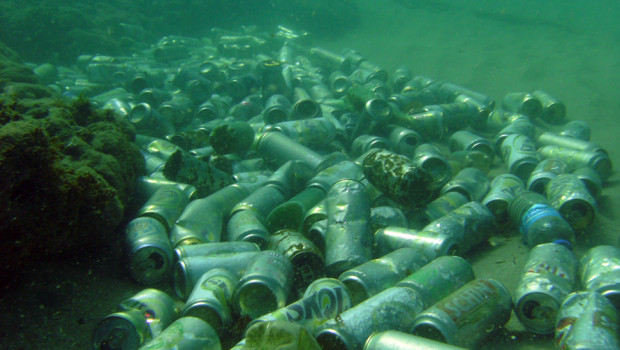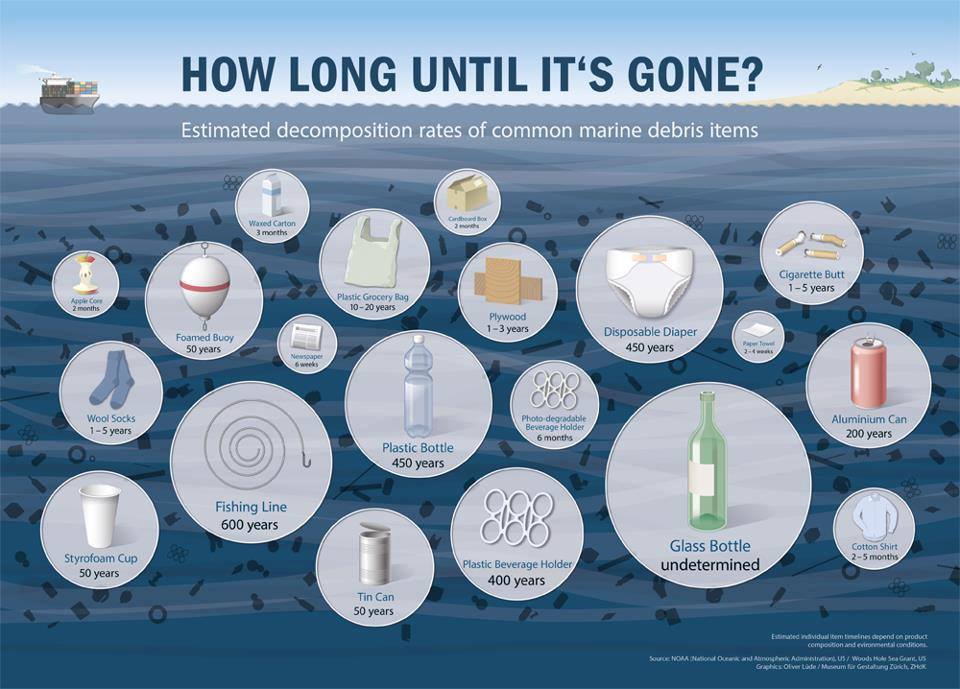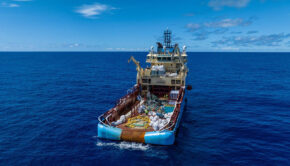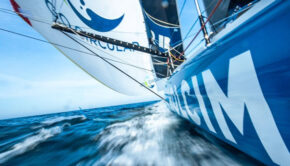Aluminum Cans and the Ocean
Published on September 22nd, 2015
by Ian Thomson, Ocean Crusaders
I was asked the other day about throwing aluminum cans in the ocean. The question came about as the person concerned has been on racing yachts and an ongoing argument was about whether it was okay or not to throw an aluminum can overboard.
The person asking me was against it by the way. The argument also included a version that it is okay to throw it overboard as long as you tear it in two as that way the lining of the can is broken and hence it will rust away quicker.
Before I answer the questions, let’s first of all look at the humble aluminum can. What is it? Well we have to go back to 1929 to find the technicians at the Aluminum Can Company trying to find a solution for canning beer. This was courtesy of Anheuser-Busch and Pabst who wanted their beer in a can.
The researchers kept coming up with a problem that the beer would eat into the liner of the can. Beer has a strong affinity for metal, causing precipitated salts and a foul taste. The brewers called the condition “metal turbidity”.
The American Can Company produced the flat or punch top can in 1934. The lining was made from a Union Carbide product called “Vinylite”, a plastic product which was trademarked “keglined” on September 25, 1934. So the fact is that an aluminum can actually contains plastic. It is illegal under MARPOL regulations to throw plastic in the ocean all around the world.
In addition to this, all cans these days are colored with logos to make sure branding is seen by the public. This branding is made of toxic inks and are also lined with a very thin plastic exterior. So the humble aluminum can is not 100% aluminum. It contains plastic which we are aware that every piece of plastic that has ever been created still exists in some form.
Let’s take it another step – the question was asked by a yachtie with regards to racing yachts in particular. ISAF Racing Rules of Sailing, RULE 55 TRASH DISPOSAL states ‘A competitor shall not intentionally put trash in the water’.
Hence it is not only illegal under MARPOL regulations, but there is a case to say that if a competitive boat got footage of you throwing a can, or a cigarette butt, or any other trash from your boat, they can protest you. Imagine getting to the end of the Sydney to Hobart and you have won your division, only to get protested out for throwing trash in the ocean. It could happen.
Another question asked was whether a can takes longer to degrade in landfill or the ocean? In the ocean it will take up to 200 years, yet the plastic will remain in the ocean forever. I can’t give you the time it will take in landfill but the correct answer to this is that aluminum cans should not end up in landfill, they should be recycled.
Aluminum is arguably the best material for recycling as it doesn’t take a lot of processes to become raw aluminum again. The cans are thrown in a furnace where the toxins are burnt (fumes filtered and hence no toxins released into the atmosphere) and the molten aluminum is returned to its raw form where it can be made into more cans or containers, or maybe even a boat.
When I launched Ocean Crusaders back in 2010 it was on the back of finding dead turtles in the Whitsunday Islands (AUS). One of those turtles I returned to Marine Parks and it was dissected to find out what had killed it.
It was found to have a plastic bag form perfectly in its stomach so that everything it ate went straight into the bag. Contents of the bag revealed the usual sea grass and corals, however amongst the grass were 12 cigarette butts, a water bottle cap and half a Coca-Cola can. Any debris in the ocean, no matter how quickly it will degrade, has the potential to kill marine life.










 We’ll keep your information safe.
We’ll keep your information safe.